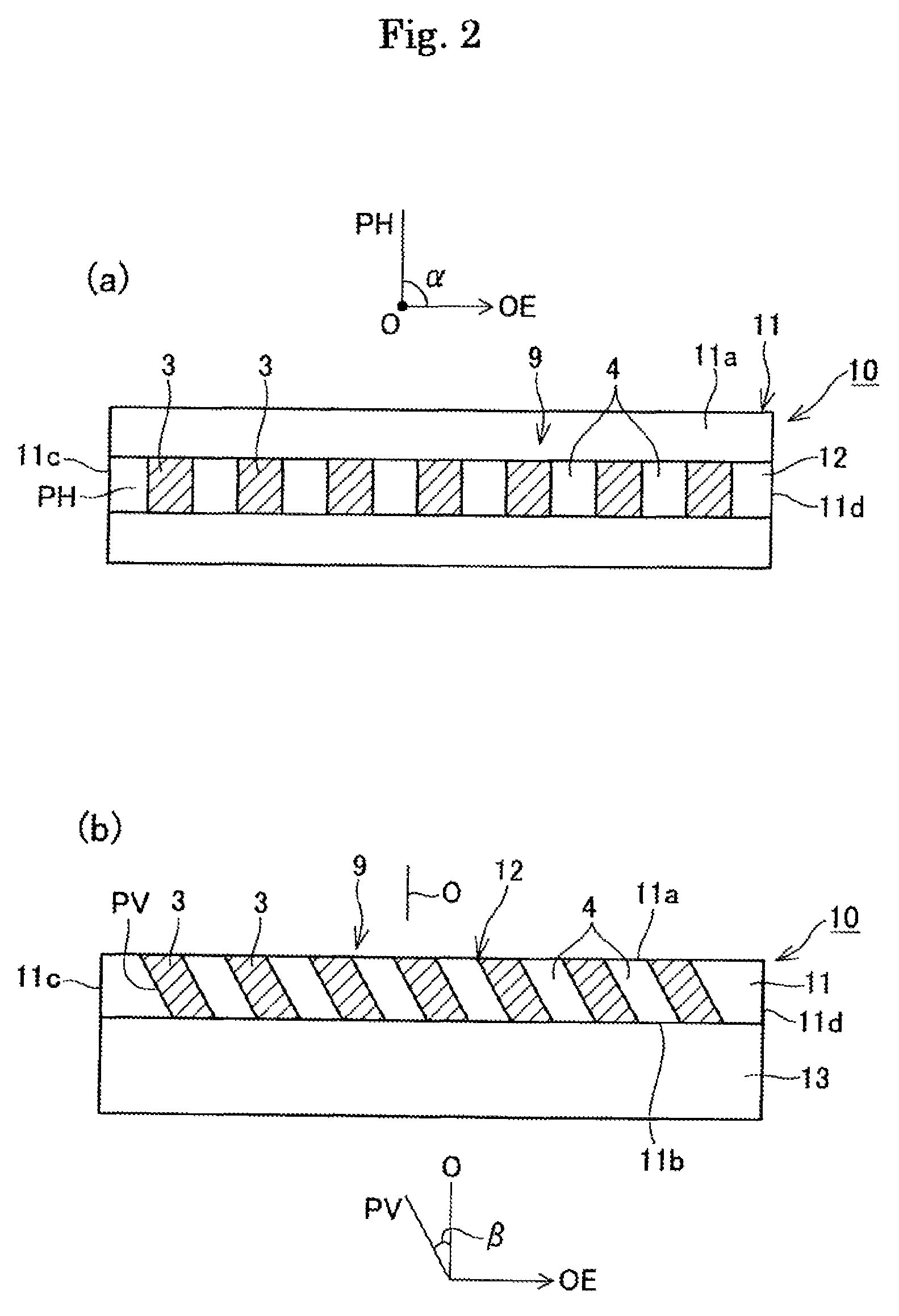Wavelength converting devices
a conversion device and wavelength technology, applied in the field of wavelength conversion devices, can solve the problems of difficult to obtain original high oscillation efficiency, deviation of oscillation output of harmonic waves over time, etc., to reduce the reduction of conversion efficiency, improve the connection efficiency, and reduce the deterioration of the domain inverted part.
- Summary
- Abstract
- Description
- Claims
- Application Information
AI Technical Summary
Benefits of technology
Problems solved by technology
Method used
Image
Examples
example a1
[0091]It was fabricated the wavelength converting device having the shape shown in FIGS. 1 to 8.
[0092]Specifically, a comb like electrode and a counter electrode were formed on a upper face and an uniform electrode is formed on a bottom face of an off-cut Y plate having a thickness of 0.5 mm and of MgO 5% doped lithium niobate. A periodic domain inversion structure having a period of 5.08 μm was formed by voltage application method.
[0093]On the other hand, an adhesive was applied on a substrate of a non-doped lithium niobate and having a thickness of 0.5 mm. Then, it was adhered onto the MgO-doped lithium niobate substrate, and the surface of the MgO-doped lithium niobate substrate was ground and polished to a thickness of 3.5 μm to produce a thin plate.
[0094]Then, a channel type optical waveguide of ridge type was formed on the thin plate by laser ablation process. After forming the optical waveguide, it was formed an over clad of SiO2 and having a thickness of 0.5 g m by sputterin...
examples a2
to A5
[0098]Wavelength converting devices were produced according to the same procedure as the Example A1. However, each parameter was changed as follows.
[0099]
ε:0.1° (Example A2);0.3° (Example A3)1° (Example A4);2° (Example A5)t:0.07 μm (Example A2);0.21 μm (Example A3)0.7 μm (Example A4);1.4 μm (Example A5)β:1.1° (Example A2);3.4° (Example A3)11° (Example A4);22° (Example A5)
[0100]The oscillating output power was measured as the Example A1, and the following SHG output powers were obtained. The wavelength at this time was proved to be 975.9 to 976.4 m. The measurement was performed at room temperature (25° C.). The differences of the wavelengths of the fundamental waves were due to the deviation of thickness of the MgO-doped lithium niobate substrates fabricated for the respective examples. The state of oscillation of the semiconductor laser light was stable and deviation of output power was not observed in each of the examples.
[0101]
Example A2;84mWExample A3;83.5mWExample A4;76mWE...
example b1
[0105]A wavelength converting device was produced according to the same procedure as the Example A1. However, the construction shown in FIG. 9 was applied. The respective parameters were changed as follows.
[0106]
OC: 5°, ε: 0.2°, γ: 0.3°L: 40 μm, β: 5.7°
[0107]The SHG oscillating power was measured according to the same procedure as the Example A1 to prove that the SHG output power was 82.5 mW at the wavelength of the fundamental wave of 976.2 nm. The measurement was performed at room temperature (25° C.). The state of oscillation of the semiconductor laser light was stable and deviation of output power was not observed.
PUM
| Property | Measurement | Unit |
|---|---|---|
| inclined angle | aaaaa | aaaaa |
| wavelength | aaaaa | aaaaa |
| wavelength | aaaaa | aaaaa |
Abstract
Description
Claims
Application Information
 Login to View More
Login to View More - R&D
- Intellectual Property
- Life Sciences
- Materials
- Tech Scout
- Unparalleled Data Quality
- Higher Quality Content
- 60% Fewer Hallucinations
Browse by: Latest US Patents, China's latest patents, Technical Efficacy Thesaurus, Application Domain, Technology Topic, Popular Technical Reports.
© 2025 PatSnap. All rights reserved.Legal|Privacy policy|Modern Slavery Act Transparency Statement|Sitemap|About US| Contact US: help@patsnap.com



